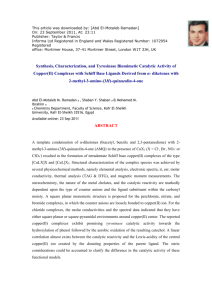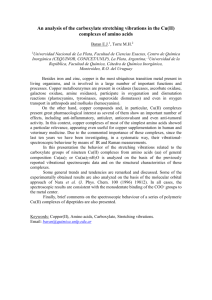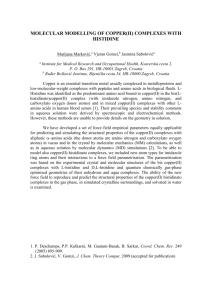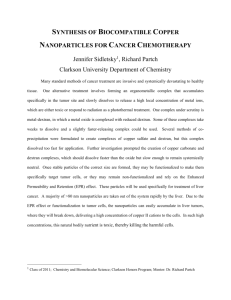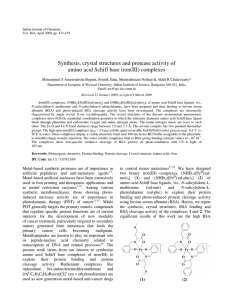Copper complexes as a source of redox active MRI contrast agents
advertisement
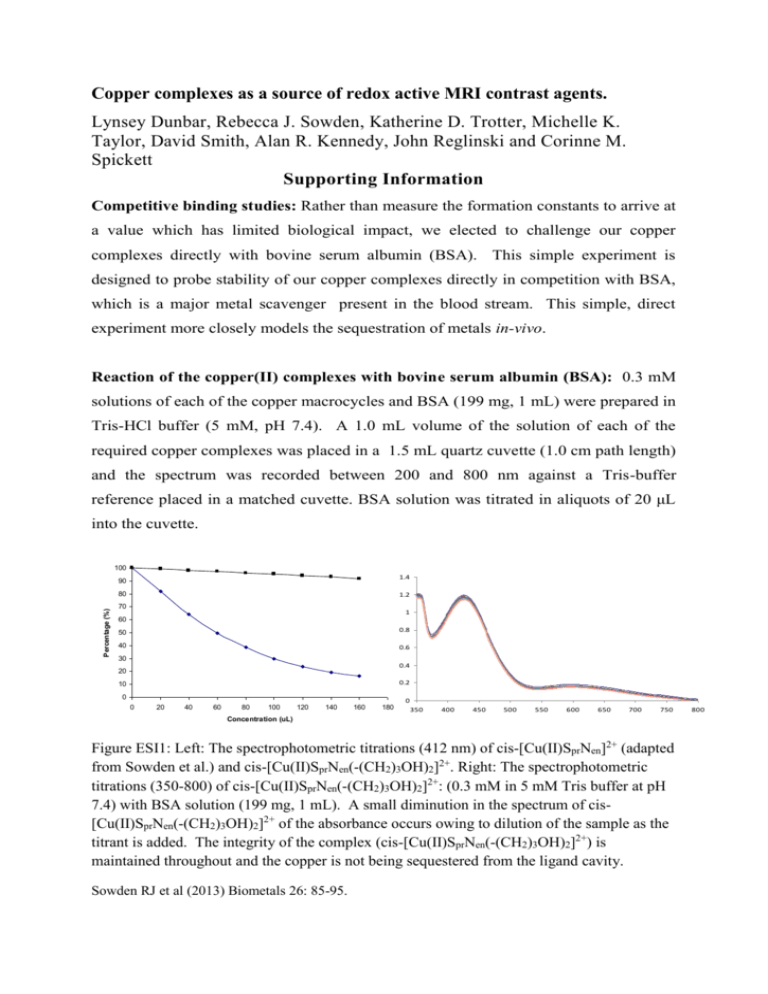
Copper complexes as a source of redox active MRI contrast agents. Lynsey Dunbar, Rebecca J. Sowden, Katherine D. Trotter, Michelle K. Taylor, David Smith, Alan R. Kennedy, John Reglinski and Corinne M. Spickett Supporting Information Competitive binding studies: Rather than measure the formation constants to arrive at a value which has limited biological impact, we elected to challenge our copper complexes directly with bovine serum albumin (BSA). This simple experiment is designed to probe stability of our copper complexes directly in competition with BSA, which is a major metal scavenger present in the blood stream. This simple, direct experiment more closely models the sequestration of metals in-vivo. Reaction of the copper(II) complexes with bovine serum albumin (BSA): 0.3 mM solutions of each of the copper macrocycles and BSA (199 mg, 1 mL) were prepared in Tris-HCl buffer (5 mM, pH 7.4). A 1.0 mL volume of the solution of each of the required copper complexes was placed in a 1.5 mL quartz cuvette (1.0 cm path length) and the spectrum was recorded between 200 and 800 nm against a Tris-buffer reference placed in a matched cuvette. BSA solution was titrated in aliquots of 20 μL into the cuvette. 100 1.4 90 Percentage (%) 80 1.2 70 1 60 50 0.8 40 0.6 30 0.4 20 0.2 10 0 0 0 20 40 60 80 100 120 140 160 180 350 400 450 500 550 600 650 700 750 Concentration (uL) Figure ESI1: Left: The spectrophotometric titrations (412 nm) of cis-[Cu(II)SprNen]2+ (adapted from Sowden et al.) and cis-[Cu(II)SprNen(-(CH2)3OH)2]2+. Right: The spectrophotometric titrations (350-800) of cis-[Cu(II)SprNen(-(CH2)3OH)2]2+: (0.3 mM in 5 mM Tris buffer at pH 7.4) with BSA solution (199 mg, 1 mL). A small diminution in the spectrum of cis[Cu(II)SprNen(-(CH2)3OH)2]2+ of the absorbance occurs owing to dilution of the sample as the titrant is added. The integrity of the complex (cis-[Cu(II)SprNen(-(CH2)3OH)2]2+) is maintained throughout and the copper is not being sequestered from the ligand cavity. Sowden RJ et al (2013) Biometals 26: 85-95. 800
